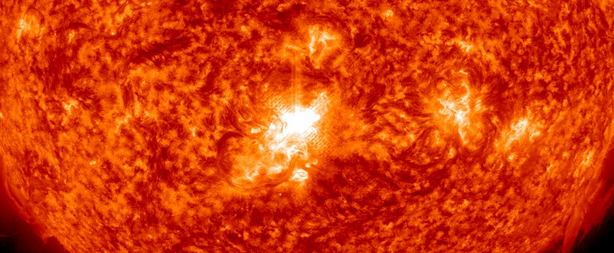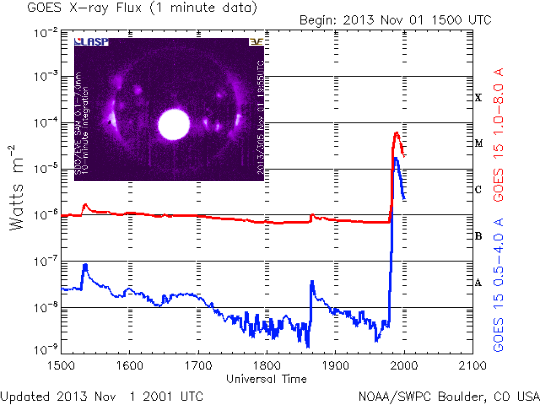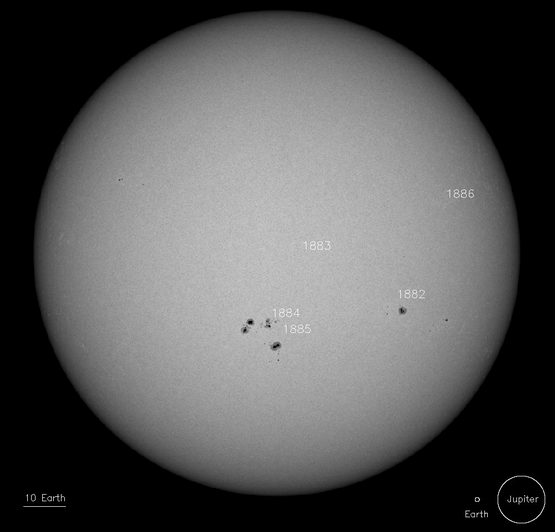Impulsive solar flare reaching M6.3 erupted from central region on the Sun

Impulsive solar flare measuring M6.3 erupted on November 1, 2013 at 19:53 UTC. The source of this event is centered around AR 1884 located at the center of disk and very geoeffective.
A 10 cm Radio Burst (TenFlare) was associated with the event. This can be indicative of significant radio noise in association with a solar flare. This noise is generally short-lived but can cause interference for sensitive receivers including radar, GPS, and satellite communications.
SUMMARY: 10cm Radio Burst
Begin Time: 2013 Nov 01 1949 UTC
Maximum Time: 2013 Nov 01 1950 UTC
End Time: 2013 Nov 01 1953 UTC
Duration: 4 minutes
Peak Flux: 280 sfu
Latest Penticton Noon Flux: 143 sfu
Description: A 10cm radio burst indicates that the electromagnetic burst associated with a solar flare at the 10cm wavelength was double or greater than the initial 10cm radio background. This can be indicative of significant radio noise in association with a solar flare. This noise is generally short-lived but can cause interference for sensitive receivers including radar, GPS, and satellite communications.
***
Space Weather Message Code: SUMXM5
Serial Number: 107
Issue Time: 2013 Nov 01 2004 UTC
SUMMARY: X-ray Event exceeded M5
Begin Time: 2013 Nov 01 1946 UTC
Maximum Time: 2013 Nov 01 1953 UTC
End Time: 2013 Nov 01 1958 UTC
X-ray Class: M6.3
Location: S12E00
NOAA Scale: R2 – Moderate
Comment: No optical class reported yet.
Potential Impacts: Area of impact centered primarily on sub-solar point on the sunlit side of Earth.
Radio – Limited blackout of HF (high frequency) radio communication for tens of minutes.

Sunspots
There are currently 7 active sunspot regions on the Earth side of the Sun.

Sunspots on November 1, 2013 – Image credit: NASA SDO/HMI
1879 – Alpha
1882 – Beta
1884 – Beta-Gamma-Delta
1885 – Beta
1886 – Beta
1887 – Beta
1888 – Beta
NOAA SWPC forecasters estimate 40% chance for M-class, and 5% chance for X-class solar flare in next 2 days.
Featured image: NASA SDO – AIA 304

Commenting rules and guidelines
We value the thoughts and opinions of our readers and welcome healthy discussions on our website. In order to maintain a respectful and positive community, we ask that all commenters follow these rules.